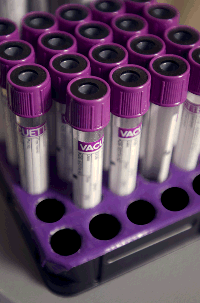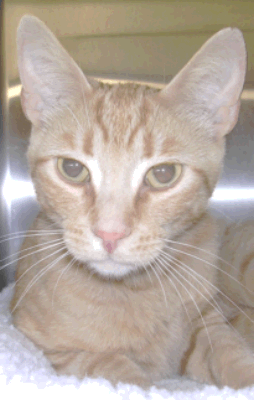|
HINTS OF CUSHING'S DISEASE

When an animal is presented to the veterinarian for a potential clinical problem, an initial “data base” is collected in the form of a blood panel and urinalysis, and possibly a urine culture. There are some “tip offs” to Cushing’s syndrome which may be noted and added to the list of observed symptoms as evidence.
|
THE STRESS LEUKOGRAM
This term refers to the relative proportions of different types of white blood cells. There is a typical pattern produced by cortisol as the body responds to stress. This pattern is called a “stress leukogram.” If this pattern is seen in a patient that does not seem stressed, there is a possibility that an excess of cortisol is present.
The stress leukogram classically involves:
- Elevated neutrophil count
- Lowered lymphocyte count
- Lowered eosinophil count
These are all types of white blood cells counted in a test called a Complete Blood Count (or CBC for short). You don't need to know what those cells do; it is the pattern of increases and decreases that suggests cortisol is afoot.
|

(Photo Credit: CDC Public Health Image Library)
|
ELEVATED ALKALINE PHOSPHATASE
Alkaline phosphatase (often abbreviated ALP or SAP) is one of the so-called “liver enzymes,” meaning that it is chiefly found in the liver. There is a form of this enzyme which is produced in very high levels in response to cortisol. This enzyme is not harmful in excess levels but since such marked increases in its levels are associated with cortisol, this would be a good hint that either this patient is taking cortisone type medications or has Cushing’s disease.
|
ELEVATED CHOLESTEROL
This is a common finding in most endocrine diseases and, in this case, results from abnormal fat mobilization. High levels of circulating cholesterol may, as in humans, alter normal circulation and blood clotting.
UNCONCENTRATED URINE AND/OR BLADDER INFECTION
When a pet drinks excessive amounts of water, the extra water is passed as urine. As long as there is extra water, urine will be dilute. Because of the immunosuppression associated with Cushing’s disease, evidence of bacterial infection may be present as well or such evidence may be concealed by the dilution of the urine. Ideally urine should be cultured if it is too dilute to reliably detect white blood cells or blood. Recent studies have shown that 20% of dogs with Cushing’s disease have an inapparent bladder infection.
These classic laboratory findings complement the physical examination and may lead your veterinarian to recommend definitive testing for Cushing’s Syndrome. Not all of these findings need be present to suggest further testing for Cushing's Syndrome but the suggestion is stronger as more of these hints are detected.
|

(Photo Credit: CDC Public Health Image Library)
|
|

(original graphic by marvistavet.com)
|
FELINE CUSHING'S DISEASE IS A LITTLE DIFFERENT
The classical screening test findings seen in the dog are not typically seen in the cat. Most cats with Cushing's disease do not have a stress leukogram as described above. They do not have elevations in cholesterol or liver enzymes and their thyroid levels tend to run in the normal range. Most cats with Cushing's disease are diabetic and have findings referable to that. Classically the cat with Cushing's disease has especially intractable diabetes mellitus and diabetic control seems to require very high insulin doses if it can be controlled at all. It is generally the diabetes mellitus that is diagnosed first in a cat with Cushing's disease. If the diabetes does not respond to insulin as expected, underlying causes are sought and one of these is Cushing's disease. For more information on other possibilities see our page on Difficult to Regulate Diabetic Cats.
|

Page last updated: 3/25/202022
Page last reviewed: 10/7/2023
|